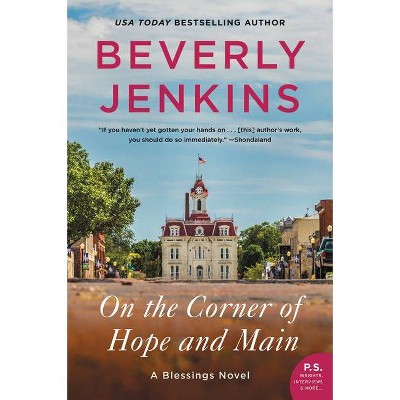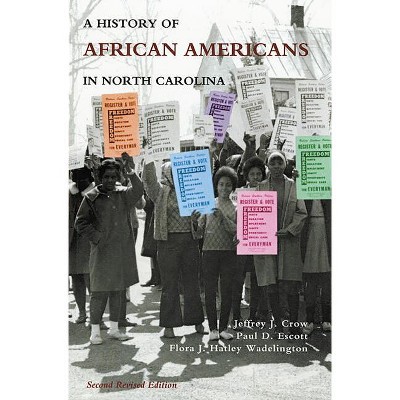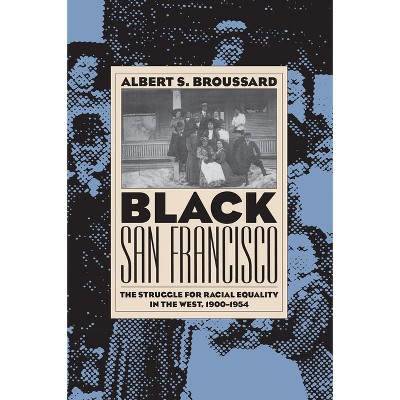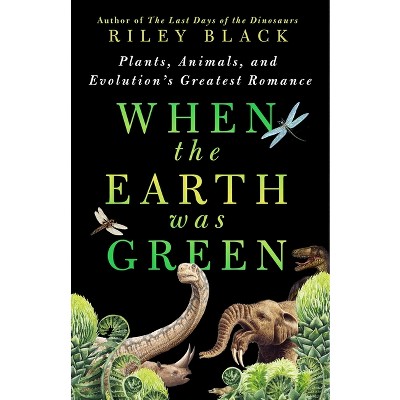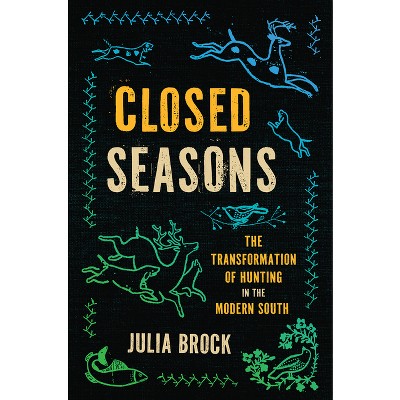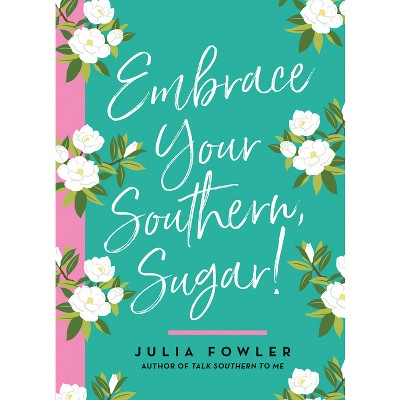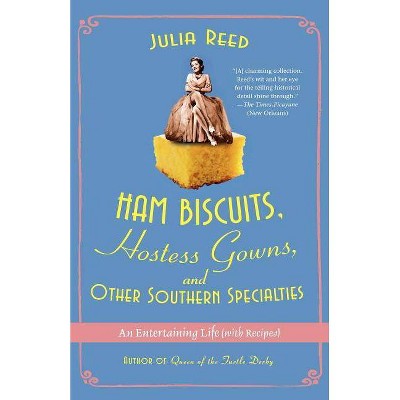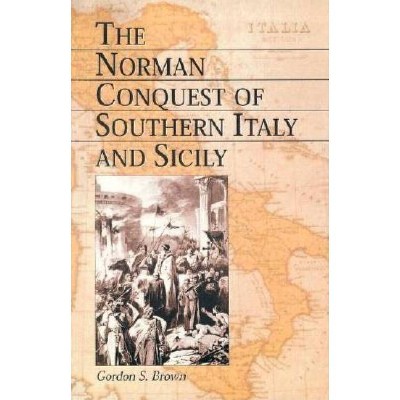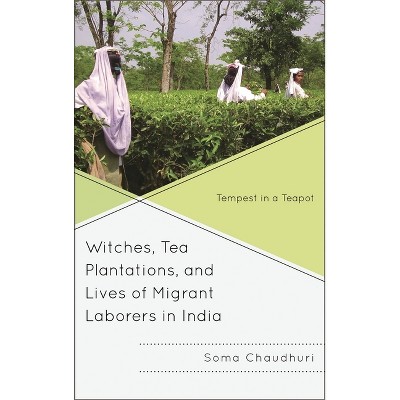Sponsored

Leisure, Plantations, and the Making of a New South - (New Studies in Southern History) by Julia Brock & Daniel Vivian
$121.00
In Stock
Eligible for registries and wish lists
Sponsored
About this item
Highlights
- This bookinvestigates the social, architectural, and environmental history of sporting plantations in the South Carolina lowcountry and the Red Hills region of southeast Georgia and northern Florida.
- About the Author: Daniel Vivian is assistant professor and director of the Public History Program at the University of Louisville.
- 222 Pages
- History, United States
- Series Name: New Studies in Southern History
Description
About the Book
This book investigates the social, architectural, and environmental history of sporting plantations in the South Carolina lowcountry and the Red Hills region of southeast Georgia and northern Florida. By examining the two largest collections of sporting plantations in the New...Book Synopsis
This bookinvestigates the social, architectural, and environmental history of sporting plantations in the South Carolina lowcountry and the Red Hills region of southeast Georgia and northern Florida. By examining the two largest collections of sporting plantations in the New South, it explores questions about environmental change, recreation, race relations, and historical memory of slavery during the first half of the twentieth century.Review Quotes
Although the basic interpretive contours in place a quarter century ago regarding the New South are still visible, scholars over the past twenty-five years have filled in and added texture to virtually every aspect of the New South story. This is the case whether we are speaking of the New South's origins, content, trajectory, or meaning. Leisure, Plantations, and the Making of a New South, an important new collection of essays, at once encapsulates and punctuates these points. Taken together, the essays included in the volume enable us to situate, contextualize, and interpret the evolution of sporting plantations in the two subareas studied as well as gain insights into other related topics such as travel and tourism in the South. That the authors of the essays are attuned to the racial and class dimensions of the stories they tell--to the power asymmetries in the region, as it were--and to the environmental dimensions of the complexes about which they write adds further value.... The two great virtues of this volume are its close examination of two of the most famous sites of such sporting plantations-- the South Carolina (and Georgia) low country and the Red Hills region of southwest Georgia and northern Florida--and its sophisticated handling of the same.... In sum, the extremely well-researched and documented essays in this volume contribute significantly to the evolving literature on the subjects at hand.
Examining plantations wealthy Northerners bought as hunting retreats--sites ripe for multiple analytical lenses--this essay collection aptly demonstrates the array of work that the field can encompass. This book brings together research by seven scholars to tell the story of southern cotton and rice regions that became vacation spots around 1900. . . .When compounded with the attention given to the built environment, architectural design, and preservation, the breadth within this collection is impressive. While useful for many scholars of consumer culture, environment, and agriculture, Leisure, Plantations, and the Making of a New South will be of particular interest to students of the twentieth-century South for its sketches of the transformations of the plantation in the industrial age. In the end, this work illustrates one remarkable chapter in the metamorphosis of the southern land-scape.
In this well-researched volume, the rising industrial capitalist North meets the declining agrarian South at a moment of great change for both regions. These essays chart the motivations and impact of wealthy Northerners who, in the first half of the twentieth century, created sporting estates out of former plantations in the Florida Red Hills and South Carolina lowcountry. Seeking the fashionable country life, wealthy Northerners wanted to hunt, to entertain, and to perform before their peers a "plantation ideal" of an imagined aristocratic America, predicated on white leisure and black labor, that would enhance their largely new money status. Drawing creatively on a broad range of sources and engagingly written, these essays look beyond surface readings of the "Second Yankee Invasion" to reveal the complex interactions between locals and newcomers, white and black, and their legacy in land use, labor relations, architectural preservation, wildlife conservation, historical memory and heritage tourism. A polished and compelling contribution.
Leisure, Plantations, and the Making of a New South: The Sporting Plantations of the South Carolina Lowcountry and Red Hills Region, 1900-1940 offers both wide and deep research into two areas of the sporting plantation while crossing social, cultural and environmental fields of history. Northern elites purchased tens of thousands of acres and transformed them from landscapes of agricultural production to landscapes of leisure in the Red Hills during the first half of the twentieth century.
This collection is a useful addition to the growing literature on southern hunting as it places the rituals and pageantry of hunting in broader economic, environmental, social, and cultural contexts. It is somewhat slanted toward the Lowcountry . . . This focus does not take away, however, from the relevance of this multifaceted study of repurposed landscapes and reimagined pasts.
This collection of seven essays raises important questions about the post-reconstruction and 20th-century South . . . The collective contribution is to highlight the development of northern-owned hunting estates in coastal Carolina and Georgia and in the red hills of southwestern Georgia and the northern Florida panhandle. The estates were at once leisure retreats and illustrations of the early 20th-century approaches to conservation (hunting and game laws often ran counter to local economic needs) or interracial relations (work-based relationships on the estates reinforced the position of African Americans in the world of southern tenancy even as the estate owners were dependent on tenants for expertise as guides). The essays are strongest in giving detail to the patterns of estate development (architecture, purchasing, or the estates as tourist destinations) and in outlining the social or hunting activities of the owners, residents, and hunters. While the essays also demonstrate the influence of estate owners in the politics of the 20th-century South, there are potentially rewarding lines of inquiry into politics that are left unexplored. . . .Summing Up: Recommended. Upper-division undergraduates and above.
This fascinating collection provides a much-needed examination of the southern sporting plantation, a phenomenon that most historians of the South know about but neglect. In placing it at the center of analysis, the contributors here offer important interpretations about the social, cultural, and environmental history of not only the post-Civil War South but also the nation.
This fascinating collection transforms the vaguely familiar story of wealthy Yankees vacationing in the early twentieth century South. When Wall Street plutocrats and their ilk gentrified the plantations of South Carolina and southern Georgia they altered in profound ways the natural and built landscape while accelerating some and slowing other social changes underway in the region. These lively essays are a fresh reminder of the dialectic of wealth and poverty, leisure and work, destruction and creation, reality and fantasy that are so central to southern identity.
This history is of considerable importance in variety of areas, including waterfowl conservation; cutting-edge research connected with bobwhite quail; survival of traditional rice plantation culture; promulgation of game regulations and wildlife management; and a visible, viable link with a sporting world we have largely lost. Add to that preservation of vast tracts of land that have escaped the ravages of the logger's saw and ever expanding suburbanization, and the result is a subject area richly meriting study. This volume provides a most welcome incursion into this field, and its seven tightly written, well-researched chapters provide a solid foundation upon which future studies are certain to be built.
About the Author
Daniel Vivian is assistant professor and director of the Public History Program at the University of Louisville.
Julia Brock is assistant professor and co-director of the Center for Public History at the University of West Georgia.Dimensions (Overall): 9.1 Inches (H) x 6.1 Inches (W) x .7 Inches (D)
Weight: 1.05 Pounds
Suggested Age: 22 Years and Up
Number of Pages: 222
Genre: History
Sub-Genre: United States
Series Title: New Studies in Southern History
Publisher: Lexington Books
Theme: State & Local
Format: Hardcover
Author: Julia Brock & Daniel Vivian
Language: English
Street Date: October 1, 2015
TCIN: 1004175953
UPC: 9780739195789
Item Number (DPCI): 247-28-9548
Origin: Made in the USA or Imported
If the item details aren’t accurate or complete, we want to know about it.
Shipping details
Estimated ship dimensions: 0.7 inches length x 6.1 inches width x 9.1 inches height
Estimated ship weight: 1.05 pounds
We regret that this item cannot be shipped to PO Boxes.
This item cannot be shipped to the following locations: American Samoa (see also separate entry under AS), Guam (see also separate entry under GU), Northern Mariana Islands, Puerto Rico (see also separate entry under PR), United States Minor Outlying Islands, Virgin Islands, U.S., APO/FPO
Return details
This item can be returned to any Target store or Target.com.
This item must be returned within 90 days of the date it was purchased in store, shipped, delivered by a Shipt shopper, or made ready for pickup.
See the return policy for complete information.
Trending Non-Fiction

$19.31
was $20.98 New lower price
4 out of 5 stars with 65 ratings

$18.28
was $19.58 New lower price
4.7 out of 5 stars with 17 ratings

$4.59
MSRP $7.99
Buy 2, get 1 free select books
4.8 out of 5 stars with 123 ratings

$6.20
MSRP $10.95
Buy 2, get 1 free select books
4.8 out of 5 stars with 33 ratings

$7.09
MSRP $9.99
Buy 2, get 1 free select books
4.9 out of 5 stars with 46 ratings
